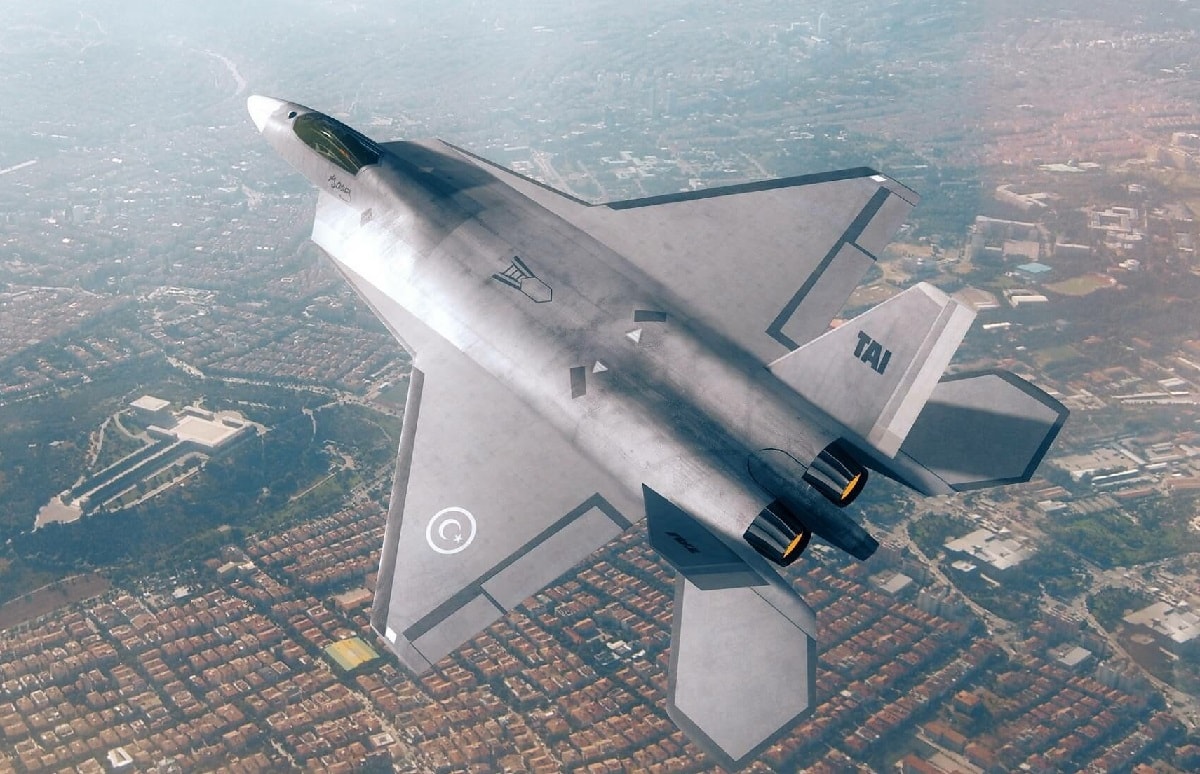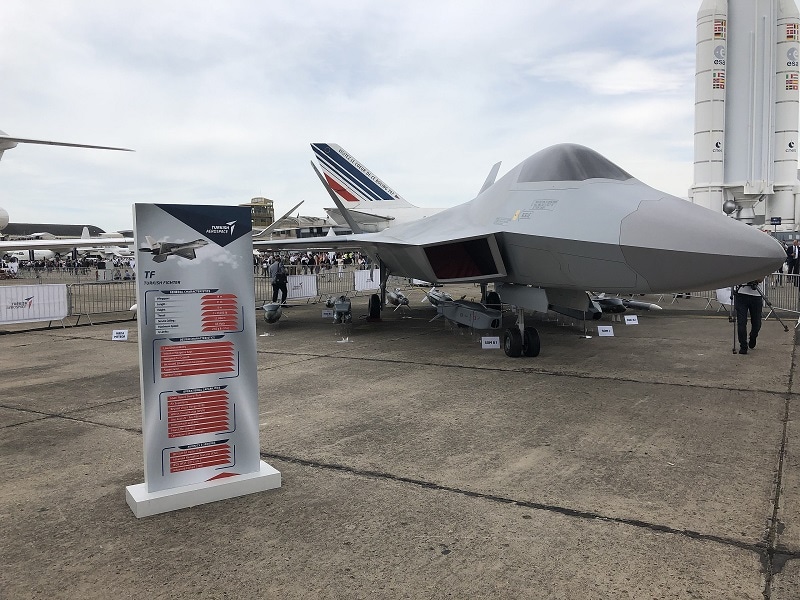Maya Carlin

Turkey and Pakistan are collaborating to design and produce a new fifth-generation stealth fighter aircraft. The TF-X stealth twin-engine fighter was first announced in 2016, and the plane is now set to make its first flight in 2025. Turkish Aerospace Industries displayed a full-scale figure of the National Combat Aircraft this February at the Singapore Air Show.
The Top Fighter of the Islamic World
After Turkey went ahead with its purchase of Russia’s S-400 air defense system, Washington removed it from the F-35 Joint Strike Fighter program. Turkish President Recep Tayyip Erdogan then turned to Pakistan to develop an alternative.
The TF-X is meant to replace the country’s aging F-16 fleet. Dubbed the “first big fighter of the Islamic world,” the new fifth-generation aircraft will improve Turkish-Pakistani defense ties and lessen Ankara’s dependence on U.S. airframes.
Similar to Lockheed Martin’s F-35 Lightning II, Turkey’s TF-X is a multi-role aircraft built for air-to-air missions. The fighter could also deploy for air-to-ground missions. The jet reportedly hosts cutting-edge radar, ground-attack capabilities, networked drone control, and an advanced internal weapons bay. Turkey’s new jet will have a wingspan of 12 meters and a maximum take-off weight of approximately 27,000 kilograms.
Equipped with advanced avionics, the TF-X will also feature voice recognition and multiple displays, as well as high-quality audio systems and graphic interfaces.
British engine maker Rolls-Royce initially agreed to collaborate with the Turkish defense company Kale Group to develop the fighter jet’s engine. This deal fell through in 2019, however, and Rolls-Royce’s participation remains uncertain. In order to meet roll-out deadlines set by Erdogan, Turkey opened a new engineering facility to streamline its production and design process. According to the Daily Sabah, the Composite Production Building will be Ankara’s largest, and “the world’s fourth largest composite complex.”
Regional Links
Since launching its Asia Anew initiative in 2019, Turkey has emerged as an important defense manufacturer in the region. Erdogan has improved ties with Bangladesh, Kazakhstan, and Malaysia through arms sales and other military collaborative efforts. This shift, bolstered by the joint Pakistani-Turkish fifth-generation fighter, could free Turkey from the need for U.S.-made military equipment in the future.
While improving relations with South Asian countries is important, Erdogan’s rationale for choosing Pakistan as its partner in fighter development is likely tied to China. Pakistan has received Chinese military exports for decades. The People’s Liberation Army has provided Islamabad with the technology to develop missiles, tanks, jets, and even submarines. Since the U.S. kicked Turkey out of its F-35 Joint Strike Fighter program, Erdogan could be moving through Pakistan to arrive at China’s fighter jet technology.

Mock-up at Paris Air Show 2019
Erdogan sees “the first big fighter of the Islamic world” as a Turkish victory. Its National Combat Aircraft will renew Ankara’s aging air arsenal and cement Turkey as the region’s defense manufacturer. Erdogan aims to make Turkey the Islamic powerhouse of the world, and the TF-X brings the Turkish president one step closer to that goal.
No comments:
Post a Comment